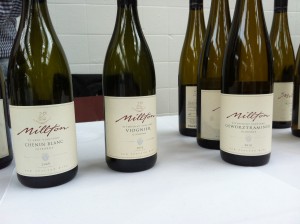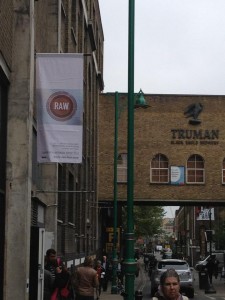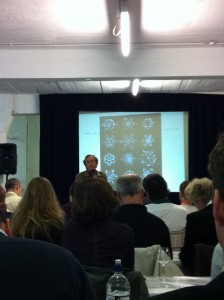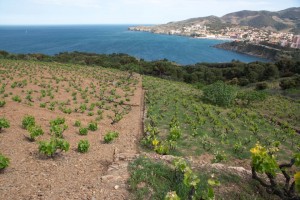Biodynamic farming is something that has always intrigued me, yet I never really understood the finer points and just thought it was an extreme form of organic farming. I had heard of moon influence and burying of cow horns in the soil but did not really get the point of it all – that is until I attended my first workshop on the topic at RAW – Biodynamics & the Authenticity of Taste by Nicolas Joly.
Nicolas Joly is one of the pioneers and leading personalities of the biodymanic wine movement. After a brief career in finance in the US, Canada and London he returned in 1977 to France to take over the family vineyard. Right from the start, Nicolas was pretty sceptical about the impact of the chemicals, which were used in modern agriculture, on the environment and from 1980 he started to experiment with biodynamic farming on his estate. In biodynamic farming the emphasise lies on the holistic development and interrelationships of the soil, plants and animals. Nicolas started off his presentation with the following statement:“Life does not belong to the earth – earth is a gift of life – it is a system in its own with lots of complex exchanges. When earth does not have enough life, eventually we will loose a little of life itself”. He went on to explain the holistic element as energy forces of the atoms which make up all life on earth. It reminded me of a chemistry lesson I took a long time ago and where I learned that everything in our world is made up of atoms and combination of atoms. The amount of single atoms remains the same yet these small chemical parts will form different bonds and become different things over the years. This made explanation made sense, and with it the holistic element became more scientific and less airy fairy for me :-) Joly continued his biodynamic lesson by stressing the importance of balance. He believes true balance in a vineyard can only be achieved by a deep understanding of life – through this knowledge a farmer can act in a certain (preventative) way to eliminate intervention as much as possible. When the farmer creates a balanced growing environment and maintains a living earth, he invests in the forces the plants needs to prosper, in harmony and respect with nature’s cycles of life. However to learn about nature and restore the land into living earth takes time, there are no short cuts and it is often not very commercial. It is a labour of passion for life istself and the rewards of biodynamic grape farming are wines which express a strong originality and individuality. Living soil is a topic which was further explored by Claude Bourguignon, the renowned soil and terroir expert. Claude’s presentation at RAW was very similar to the one he gave at the Natural European Wines Conference organised by VinNatur in Zurich last November. Claude spoke about the different elements and layers which make up the soil, the interrelationship between these soil elements and the vine, as well as other organic and micro organic activities typical for a living soil. He warned for the impact of chemicals (fertilisers and or pesticides) as they erode the soil, and with time take more and more life away. The picture here on the left is a great example of how the soil can be eroded by the chemicals – the arid part on the left is the treated part, the green part on the right has been farmed organically. Thank you to Vinivert who kindly provided the picture. For more info on Claude’s talk do check the video in my other post as the talk was extremely educational and interesting:-)I attended one another masterclass on “living soil” , this time at REAL, hosted by Tom Lubbe and Craig Hawkins, two South African winemakers. Tom pioneered a biodynamic way of farming in South Africa in the 90’s and is now making wine in the Roussillon at Domaine Matassa and Craig makes wine for Lammershoek and under his own label Testalonga. One of the typical characteristics of a living soils are earth worms and Craig spoke about the earth worm farm at Lammershoek, created to introduce more worms back into the earth, as the soil slowly recovers from all the previous treatments. Tom on the other hand spoke about the relationship about minerality and a living soil, as he believes we cannot have the former without the later. He claims that a living soil, resulting from biodynamic farming will stabilize the PH in he grapes as in the must and thus eliminate the need to use sulphur or other additives. In a way this was pretty close to what Nicolas Joly had said about the wine making process resulting from biodynamic farming which he believed happened naturally in the cellar without much interference of the wine maker. All the winemaker has to do is provide a clean and healthy environment in the cellar.

James Millton makes beautifully balanced biodynamic wines in NZ - where is still today is an exception to the rule.
A few friends have written excellent yet very different reports on the fairs – do check out Simon Woolf‘s Raw, real or just natural? where Simon explores different definitions to speak about wine made in and from grapes farmed in a sustainable way. My friend and natural wine proponent Arnold Waldstein on the other hand posted his views of the London natural winefairs in “A New Yorkers view on London’s RAW natural wine fair“. In this great post, he talks about this purity as well as the aspirational character of natural wine and speaks of the liveliness in the glass. Yes these wines are alive, as they were made from the fruits of plants who were allowed to live a balanced life!!!
To conclude I would like to briefly touch on the unique and individual character of biodynamic wines. The Apôtre vertical Champagne tasting guided by winemaker David Léclapart, who spoke about the differences in climate and balance in the vineyard as he introduced each vintage, was an amazing opportunity to really appreciate this originality. David’s Champagnes reminded me of siblings – where one can clearly see several resemblances yet also individual traits. The grape varieties, the land (exposure, deep soil content & farming) were the same and the winemaking process was pretty uniform too, yet the different balance during the growing season expressed itself in distinctively different wines. To see and taste these differences in a Champagne, where the winemaking process is notoriously elaborate, clearly brought home the biodynamic message for me, and the distinctive individual taste profiles this organic farming method can achieve :-)



